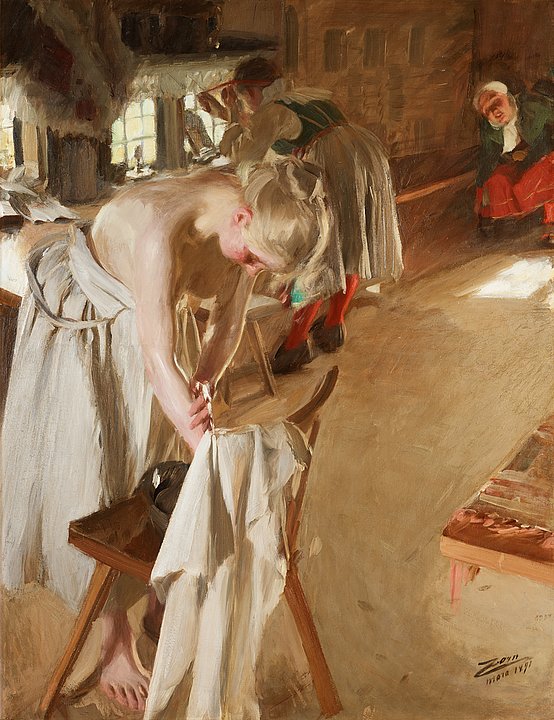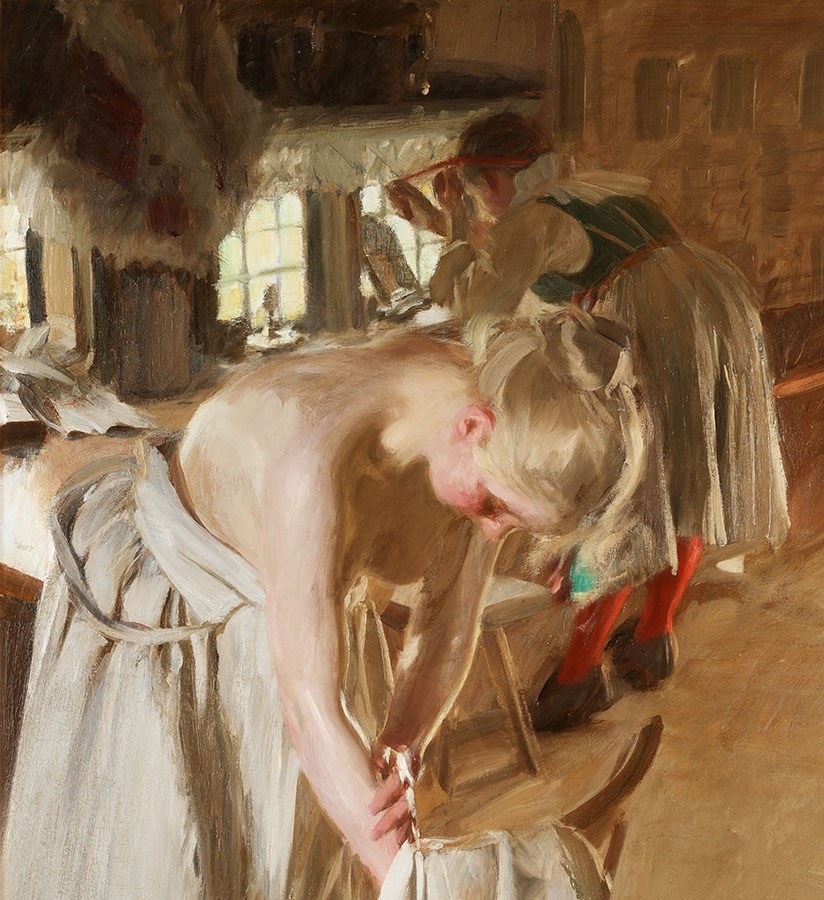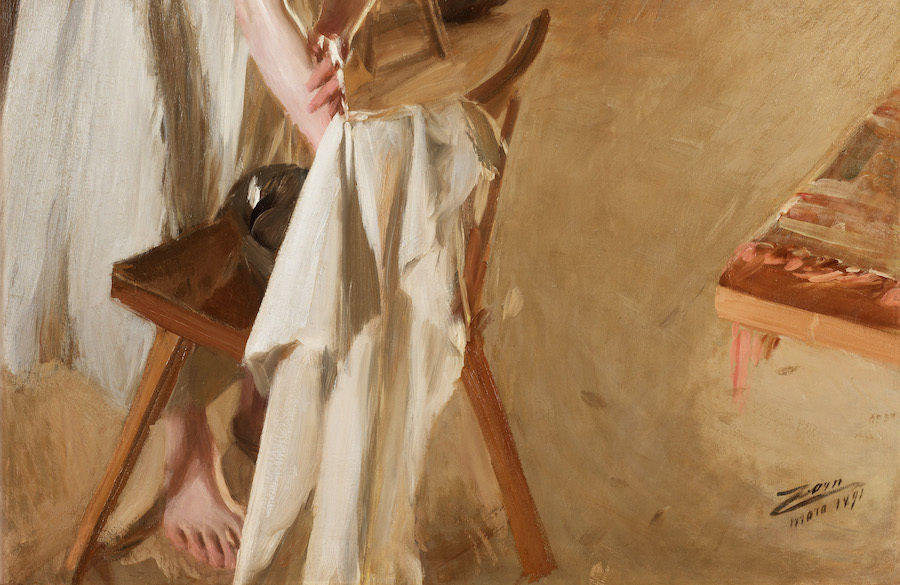Important Winter Sale presents Anders Zorn "Söndagsmorgon" (Sunday morning)
Anders Zorn
”Söndagsmorgon (Sunday Morning)”
The subject was executed as an etching in 1892 or 1894 (Delteil 85, Asplund 86).
In the summer of 1891 Zorn spent a great deal of time in Mora. This was a particularly creative period for him. Several of his finest paintings of Dalecarlian women were executed then, and amongst these is this interior, which he entitled Söndagsmorgon. The painting depicts three girls who are getting ready for church on a sunny summer’s morning. They are all at different stages in their morning toilet. The girl at the front of the painting is washing herself using a basin, which she has placed on a chair. Another girl, dressed in the traditional Dalecarlian women’s summer attire with a light-coloured skirt and a green bodice, has placed her mirror by the little window and is putting up her hair in the customary Dalecarlian fashion with a red hairband. A third woman has already finished dressing and is sitting down to put on her shoes.
It is a childhood memory that Zorn recreates in the painting. In the small Mora cottages there were no private areas for taking care of one’s personal hygiene. In the old farming communities this was done, as were so many other things, in the shared rooms. The Dalecarlian women did not feel uncomfortable in front of the children and to a young Anders this scene was normal.
On the whole Zorn lived in a female-dominated environment. In the Zorn house in Mora there was his wife, Emma Zorn, and next door lived his mother, who had been widowed in 1885, with both his sisters. His household included several female domestic staff, of which a few resided in the house. In Stockholm there was Emma’s mother, who herself had been widowed in 1878, and she only had female servants working for her. Of course there were men around – Zorn’s maternal grandfather played an important role during his childhood and there was Verner Rylander who at the end of the 1800s was employed as Zorn’s handyman. But for the most part, Zorn’s world was a female one.

› Signed Zorn and dated Mora 1891. Oil on canvas 121 x 93 cm. Estimate 12 000 000 - 15 000 000 SEK

As an adult Zorn did not have the same easy access to women’s daily lives, but he restaged it by having models act out scenes he remembered from his youth. Zorn considered his childhood to be a kind of Arcadian ideal and it played a significant role in his artistic practice throughout his life. To him the past was true and authentic, but he would argue that since the time of his childhood a vulgarisation of manners and customs had permeated society. A great deal of his production is intended as a celebration of the past.
In "Söndagsmorgon" Zorn has used a composition that he had previously returned to on several occasions. The high horizon, introduced by the impressionists, and the cropping of the motif, an influence from Japanese art, gave Zorn the possibility to depict the three people in the relatively small room without it feeling either cramped or forced. In this painting, Zorn’s ability to unite subject and composition is superbly expressed.
Birgitta Sandström
PhD, former director of the Zorn collections, Mora.
To be sold at Important Winter Sale December 8–10.
Viewing December 2 – 7, Berzelii Park 1, Stockholm
Auction Live December 8 – 10, Arsenalsgatan 2, Stockholm
Catalogue online November 25
Read more about the auction
To the work

For requests & condition reports Contact our category specialists

Stockholm
Björn Extergren
Head of Consignment and Sales Department, Fine Art. Specialist Antique Furniture, Decorative Arts and Asian Ceramics
+46 (0)706 40 28 61





























